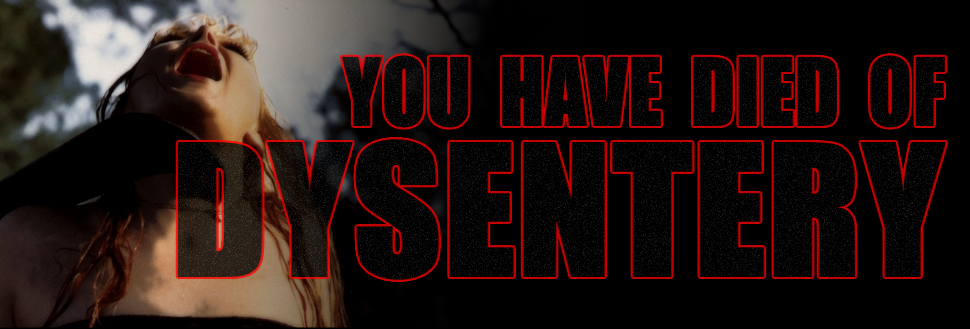Attempting to think
logically about Herschell Gordon Lewis’ 1970 pseudo-rubber reality
gore flick THE WIZARD OF BLOOD would be to miss the point. I mean,
this is a movie that begins with a stage magician ranting about
solipsism for three solid minutes. Every second of the film is a
put-on. Every major development is not to be trusted. THE WIZARD OF
GORE is a film concerned with the illusion of reality and the
plasticity of perception.
OK, so I’m making
it sound a bit more heady than it actually is, but Lewis’ film
really is a mind fuck, one that will probably fly largely over your
head the first time you see it. It’s all about a stage magician
named Montag the Magnificent. Montag is a bit of a firebrand,
peppering his performances with loud speeches about certainty and the
sham nature of media entertainment. His show starts a bit
underwhelming, just the regular old tricks any amateur magician could
pull off, but then things get interesting. Montag asks for a
volunteer, a woman to meet him on stage for the old “sawing a woman
in half” trick. A woman staggers up the aisle, clearly in some sort
of fugue state. Montag has her lay down on a table before pulling out
not just any old saw but a goddamn chainsaw. And then, with glee in
his eyes, Montag really does saw the woman in half.
Or does he?
This is where THE
WIZARD OF GORE complicates things. The sawing of the woman in half is
just the first of many murders that will be carried out by Montag in
the film, but are they really happening? The first time I saw the
film I thought the tape in my VCR was warped or just fucked up. The
editing of these scenes breaks continuity. In a later murder set
piece, we see Montag place a metal spike to the temple of a young
woman before nailing it into her skull. But then the film cuts and
the woman is perfectly fine, completely untouched. A cut later and
Montag is pulling out her brain. Another cut and the spike is clean
through her skull. Another cut and the woman is fine. Another cut,
another inconsistency, another cut, another break in the temporal
flow of the scene.
After the so-called
“magic trick” is done, the volunteer returns to her seat,
completely unharmed. But we never see a woman regenerate her damaged
tissue. We never see the piles of guts and rivers of blood reverse
their flow, seeping and squeezing back into the body. As the film
goes on, we learn that Montag is a very skilled hypnotist. Is that
what is going on here? Is the sight of bodily dismemberment as much a
ruse for the in-film audience as it is for us?
In a development
that further complicates matters, all of the female volunteers are
later found dead, their bodies mutilated in the same way they were
mutilated on stage. One woman even falls over dead in a crowded
restaurant, her stomach suddenly spilling out all over the carpet.
How exactly is this possible? Why are we treated to red tinted,
dreamlike sequences of Montag stealing the corpses of these women
from the morgue? Our lead protagonist, a talk show host named Sherry,
gets a spot of blood on her hand when she accidentally bumps into the
stretcher one of these ex-volunteers is now lying on. That spot of
blood will continually appear and disappear as the film goes along.
So what the hell
does this all mean? I don’t know. The fact that the film ends with
a kind of triple twist ending is possibly a good indication that THE
WIZARD OF GORE isn’t meant to be some tightly structured, intricate
bit of reality bending horror. The film is probably just meant to
screw with your brain a bit while saying a few words about how the
media can play games with your senses. No question is ever answered.
No solution is ever given. It’s just weird. Deal with it.
This layer of
surrealism sits on top of a well staged, but not well acted, bit of
splatter cinema. It’s one of Lewis’ most memorable films, filled
with graphic images, gaudy costuming, and clever bits of composition.
Though his performance is equal parts wooden and hyperbolic with
nothing in between, Ray Sager creates one hell of a memorable weirdo
in Montag the Magnificent. Sporting a great Harry Reems mustache,
Sager’s wild eyed performance has turned the murdering magician
into a cult icon among splatter movie fans (the film would also go on to
inspire scenes in productions as diverse as American Horror Story and
THE FUNHOUSE). Unfortunately, he’s the only real bright spot among
the cast (and believe me, that’s saying something) and as a result,
THE WIZARD OF GORE is not as memorable as it could have been. Had
Connie Mason and William Kerwin played the leads instead of Judy Cler
and Wayne Ratay, I would probably rank this a spot or two higher on
my personal Best of H.G. Lewis list.
Minor quibbles
aside, I do think THE WIZARD OF GORE is a good time. It most
certainly does not make for an easy first watch. It might take a spin
or two for the film to effectively worm its way inside your brain.
Once it does, well… it’s a nasty and confusing good time, not to
be missed.


No comments:
Post a Comment
SPEAK YOUR MIND